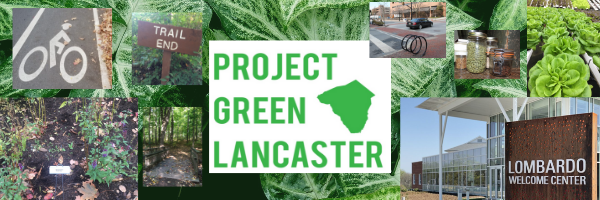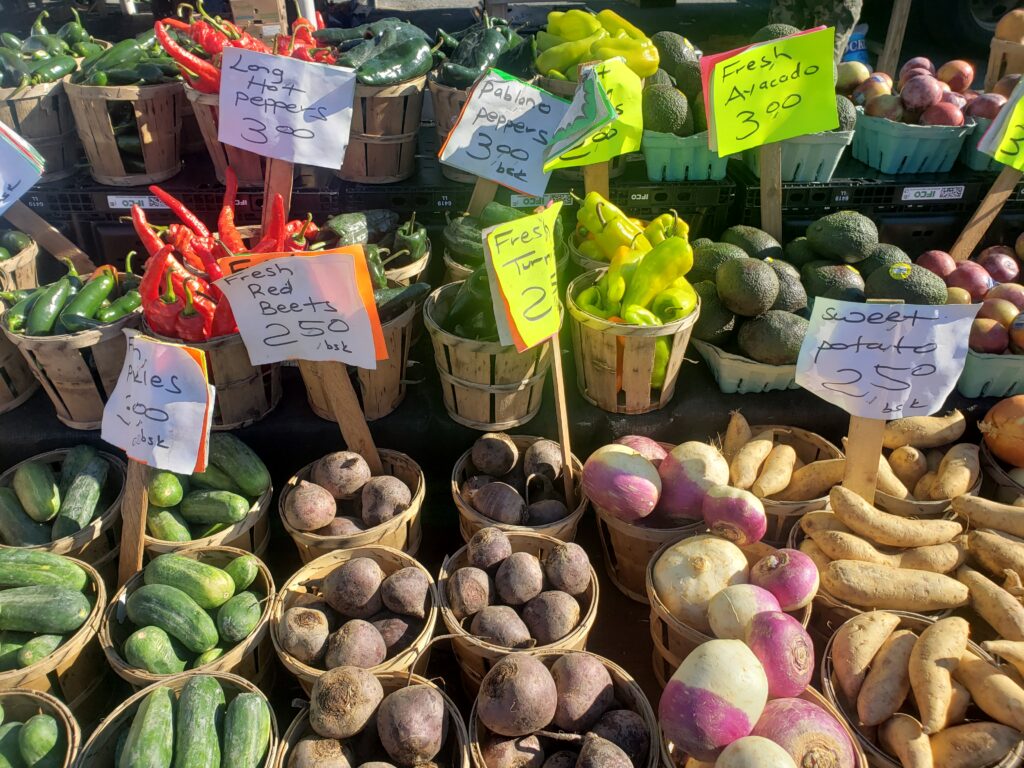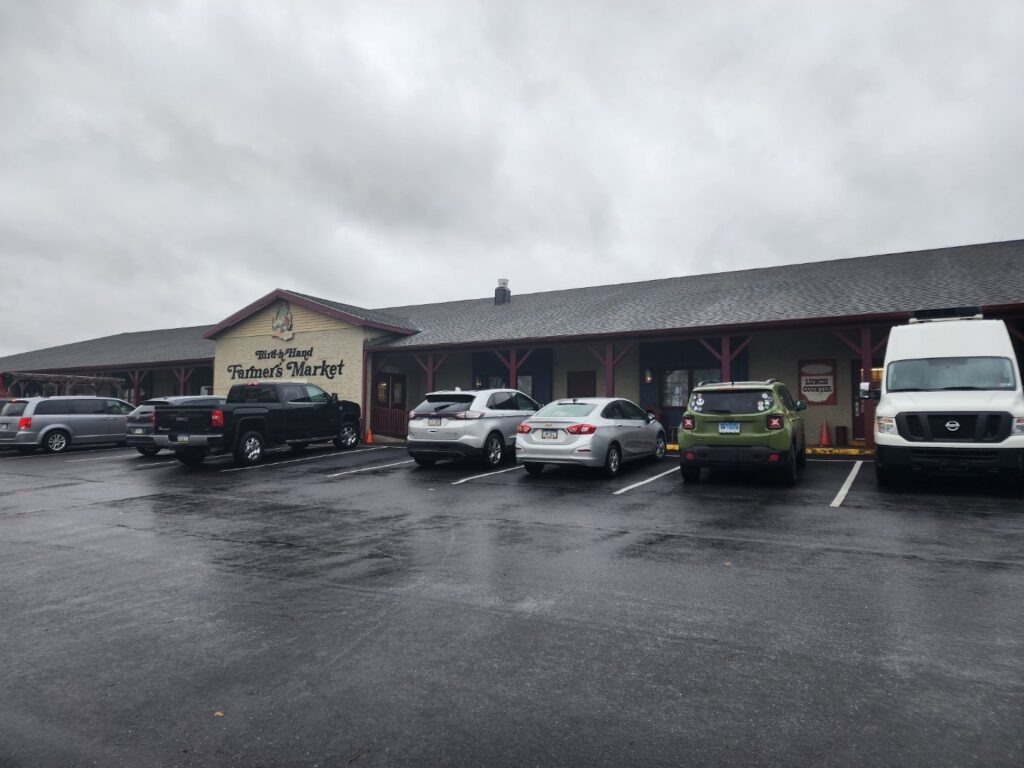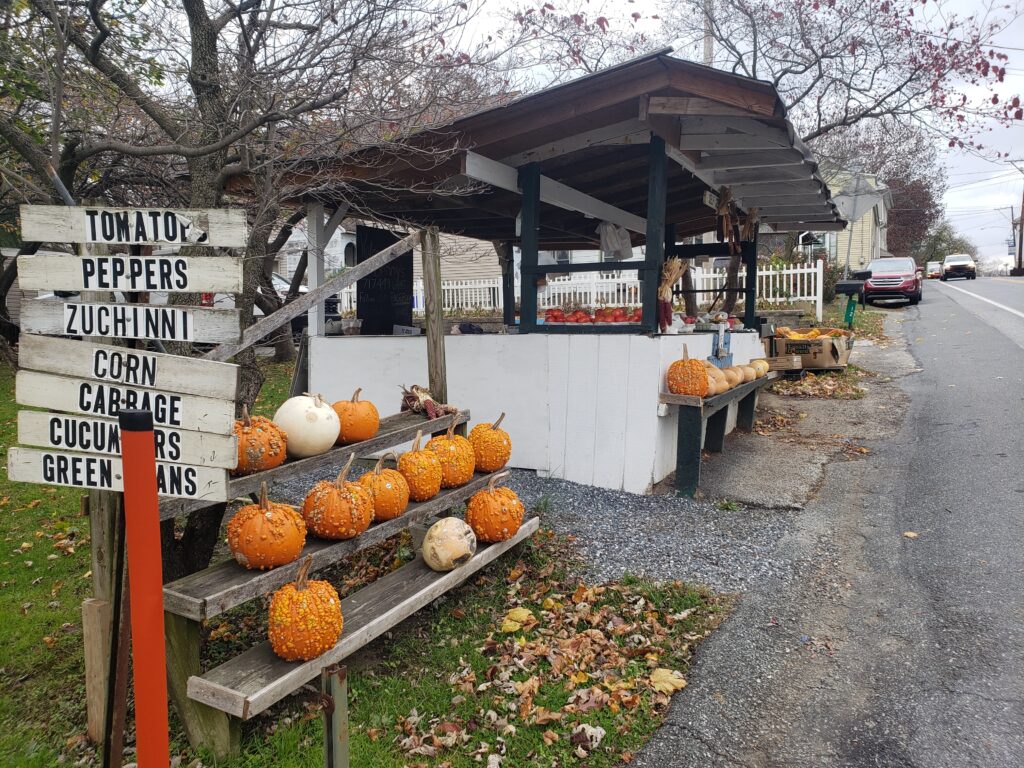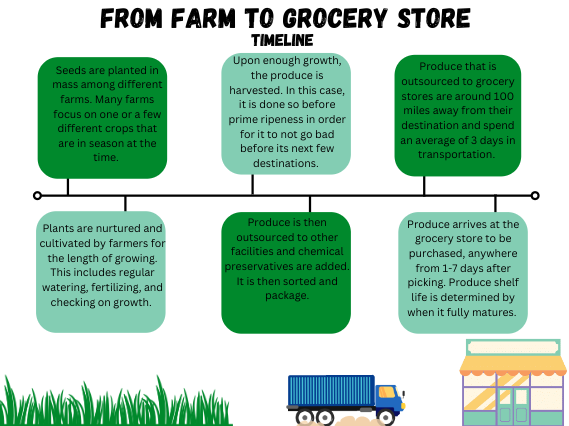by Hannah Sutton
Roadside farmer’s markets provide fresh produce and other foods at low prices to local residents resulting in sustainable farm-to-table foods in Lancaster County.
Lancaster County is called home by commercial and independent farmers alike, with the latter taking matters into their own hands by running their own food stands. Roadside farmer’s markets are a common sight within the more rural parts of the county like Bird-in-Hand and Ronks, but also not unheard of closer to the suburbs like in Elizabethtown and Millersville. The size of roadside food stands range from individual pop-up booths at the ends of driveways to larger farmers markets that include many stands run by different farmers, like Root’s Country Market in Manheim. Locally grown food is defined as being grown and harvested within 100 miles of your home.
Benefits of choosing locally grown food span across several areas including:
- General health
- Economical Impact
- Environmental Impact
General Health
Foods that are grown and sold locally require a shorter shelf-life, as they are not being transported across the state or country to be sold. This results in:
- The use of less chemical, gas, or wax preservatives on food
- Food being harvested at peak ripeness
- Fresher product, which is ultimately more nutritious
Produce starts to lose nutrients usually within the first 24 hours of being picked, no matter the stage in which it is. Think about how long it may take for an orange grown in Florida to get to Pennsylvania– how good for you is it at that point?
Economical Impact
When food is purchased at a grocery store, ultimately the majority of the money ends up in the pockets of those in corporate positions within the company. On the contrary, when local food is purchased, it is usually directly from the farmer themselves or their family. Otherwise, farmers are likely to employ local residents to work stands or their fields. This results in:
- Local economic stimulation
- Money being used to continue producing local food
- Better growing and harvesting practices
Prices of local food also tend to be less than that of grocery stores. This gives way for lower income individuals and families to have access to fresh, healthy food they may not be able to afford otherwise.
Environmental Impact
Food that is grown and sold locally does not require as many steps to get it to where it needs to be– as in physical place and time as well as in terms of quality. Some environmental pros of growing and purchasing local food are as follows:
- High use of organic growing methods
- Less use of chemical preservatives and pesticides in soil
- Less distance to transport food
- Less energy used and waste created by transport
- Less emissions from large vehicles usually used to deliver non-local food to grocery stores
With the current state of the world, climate change is a hot topic. The biggest change comes from large corporations, but that starts with push from individuals and communities. Communities that choose local push for less big corporations in their neighborhoods and towns, therefore push for less waste and energy use.
Wrap-Up
In 2021, it was recorded that Lancaster County had 5,108 farms with 99% of them being family farms. That means approximately 5,056 farmers in Lancaster are independently running their productions with their families or limited outside help. Only 39% of farms in the county hire farm labor. These statistics reinforce the fact that the money used in transaction for local food is used to uphold farmers and their production. Food manufacturing ranks first in Lancaster County’s roundup of agricultural production sales. Root’s Country Market stands as the county’s oldest fresh food stand which opened in 1925 as a poultry auction, leading the charge for the hundreds of fresh food stands in Lancaster today.
Bird-in-Hand Farmers Market
Bird-in-Hand Farmers Market is a family owned and operated business in the heart of Amish country Lancaster. Home to thirty regular vendors, local products ranging from textiles to produce to specialty foods are available for purchase. Customers can munch down on a freshmade whoopie pie or pretzel while browsing ethically sourced leather products, or sit down and enjoy a Pennsylvania Dutch style lunch before picking up fresh meat and produce to whip up for dinner. The market is open and provides fresh products year round (with limited hours in the fall and winter). With their dedication to high quality goods and an emphasis on the importance of buying small, Bird-in-Hand Farmers Market has gained and kept popularity among locals and tourists alike.
Benny’s Produce
Benny’s Produce is an independent family owned and operated produce stand run located in Manor Township. Since the 80s, the man behind the scenes, Benjamin Duke, grows most of the available product in just his yard garden with some help from his brother and grandson. Sometimes lovingly referred to as Pap, Benjamin grew up with a garden and developed a passion for growing produce. Capturing the essence of small and local business, this market is a single booth standing at the end of the family’s driveway alongside the road. Customers are able to browse stock and have any questions answered by Jenn, granddaughter of Benjamin. If she’s not around, the family puts trust in the community by offering a cash drop-box. Fresh produce is available from early spring, well into the fall. Customers can stay up-to-date with all that’s happening at Benny’s Produce by engaging with their self-run Facebook group.
Greenhouse Gas Emissions
Food that is harvested in one place and sold in another is costing the earth more than what meets the immediate eye. Calculations within recent years have led to concluding that food transportation creates 19% of emissions caused by the global food market. 30% of all greenhouse gas emissions are contributed by food. This includes that of land use, production, and transport. Food transportation in itself makes up 6% of all greenhouse emissions. Some products, such as produce, contribute less emissions during production than during transportation. As far as levels of emissions generated through food transportation, the United States lands in the top four countries attributed.
Lancaster’s Market History
Lancaster County has always been at the forefront of local farming and is credited with having the first known farmers market of the United States. Known today as Lancaster Central Market, the 120 square foot lot was designated to its purpose in 1730 as the city was being built. Markets continued to evolve and 1818 was the first year that the first rendition of what we know now as roadside farmers markets popped up. Local farmers would set up on the side of the road to sell fresh goods out of wagons. Fresh goods were essential to life in this time period, due to the lack of farming and transportation technology we have today. Lancaster was the start of farmers markets as we know today, with currently over 8,000 markets operating throughout the US. Many of them are still here in Lancaster County, divided among fully independent roadside stands and locally owned and operated markets that showcase many booths run by locals.
References
Buying local makes economic sense. Fair Food Network. (n.d.). Retrieved November 22, 2022, from https://fairfoodnetwork.org/from-the-field/buying-local-makes-economic-sense/
Economic impact. Lancaster County Agriculture Council. (2021, March 15). Retrieved November 22, 2022, from https://www.lancasteragcouncil.com/economic-impact
Farmers Markets promote sustainability. Farmers Market Coalition. (2022, September 1). Retrieved November 22, 2022, from https://farmersmarketcoalition.org/education/farmers-markets-promote-sustainability/
Food, fun, family… it’s a Lancaster County tradition…since 1925! Root’s Country Market & Auction Inc. (n.d.). Retrieved November 22, 2022, from https://www.rootsmarket.com/
Is eating locally grown food healthier for you? Benefits of Eating Local Produce | Virtua Health, NJ. (n.d.). Retrieved November 22, 2022, from https://www.virtua.org/articles/is-eating-locally-grown-food-healthier-for-you#:~:text=The%20main%20health%20benefit%20of,it’s%20most%20dense%20with%20nutrients.
Neal, P. by A. (2019, April 26). “Meet me at the market” – the evolution of a farmers market. USDA. Retrieved November 22, 2022, from https://www.usda.gov/media/blog/2013/08/07/meet-me-market-evolution-farmers-market
News, F. G. S. (2022, March 3). Grocery store produce: Learn more at Fruit Growers Supply. Serving Agriculture Since 1907. Retrieved November 22, 2022, from https://fruitgrowers.com/how-does-produce-get-to-the-grocery-store/
ScienceDaily. (2022, June 20). Fifth of global food-related emissions due to transport. ScienceDaily. Retrieved November 22, 2022, from https://www.sciencedaily.com/releases/2022/06/220620122334.htm
